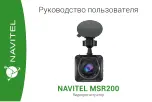
V1.02
Thom Hogan’s Complete Guide to the Nikon D300
Page 295
quality in your images than is possible for the situation you’re
photographing.
Thus, I consider automatic ISO a safety net for situations
where you don’t have the time to constantly be switching ISO
values. It’s not something you should use as a full-time
option, in my humble opinion.
How ISO Values are Created
You might wonder how higher ISO values are generated by
the camera. All ISO values above 200 are created by
amplifying the data coming into the Analog-to-Digital
converter. In other words, the sensor always works at the 200
sensitivity, but underexposed data values coming from the
photosites are boosted by an amplifier to produce the higher
ISO values.
As you might guess, this means minor differences between
photosites get magnified and may become visible. Imagine a
photosite that captures 150 light photons and an adjacent one
that receives 155 photons. This difference is insignificant
when these are black values and end up getting interpolated
into, say, a pixel value of 10,10,10 versus 10,11,10. But if
these values are being amplified several times and now
represent middle gray values, the difference may be
significant and visible.
ISO Operating Suggestions
To optimize image quality, follow these guidelines for setting
ISO values:
•
Use the lowest numbered ISO setting (200) whenever
possible
. The D300 is near state-of-the-art if not at state-
of-the-art when using its base ISO level.
•
Expose to the right.
Underexposure will generate
additional noise when you post process an image to
restore brightness. Keep your exposure histogram pushed
towards the highlights (but don’t blow out highlights or
any channel’s highlights by going too far and pushing it
















































